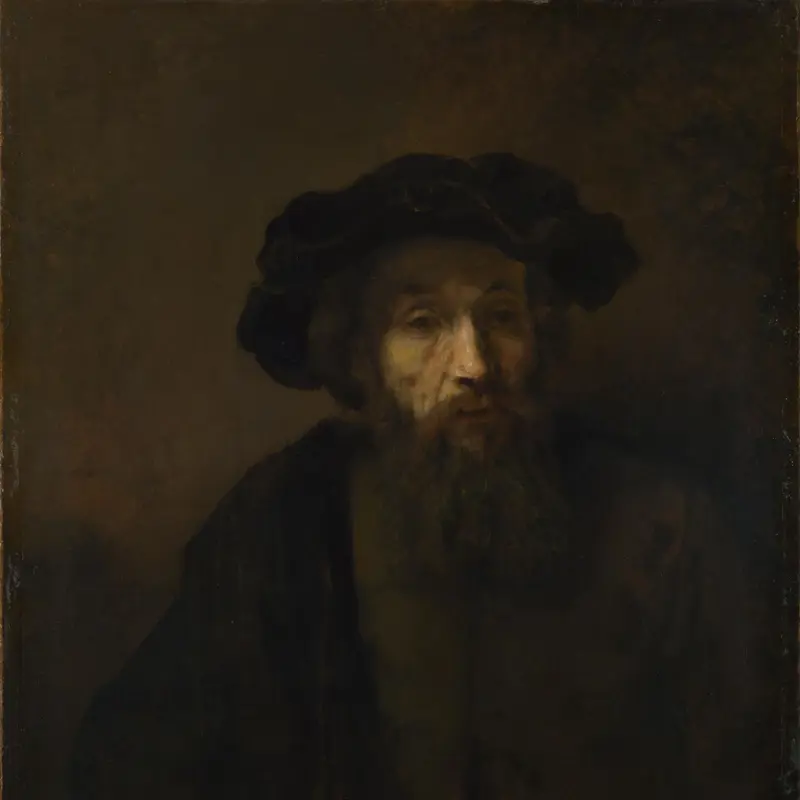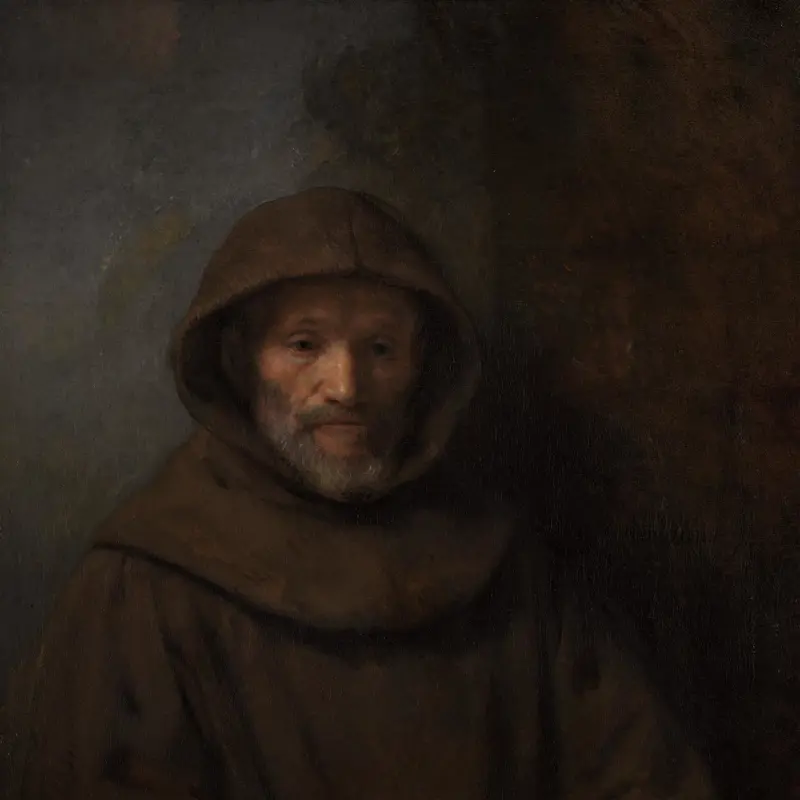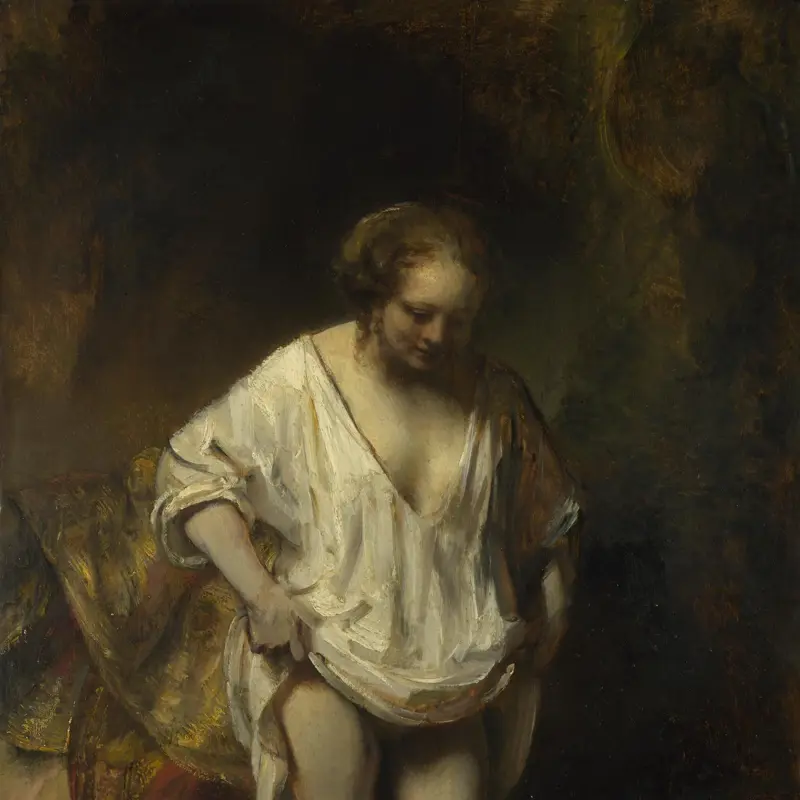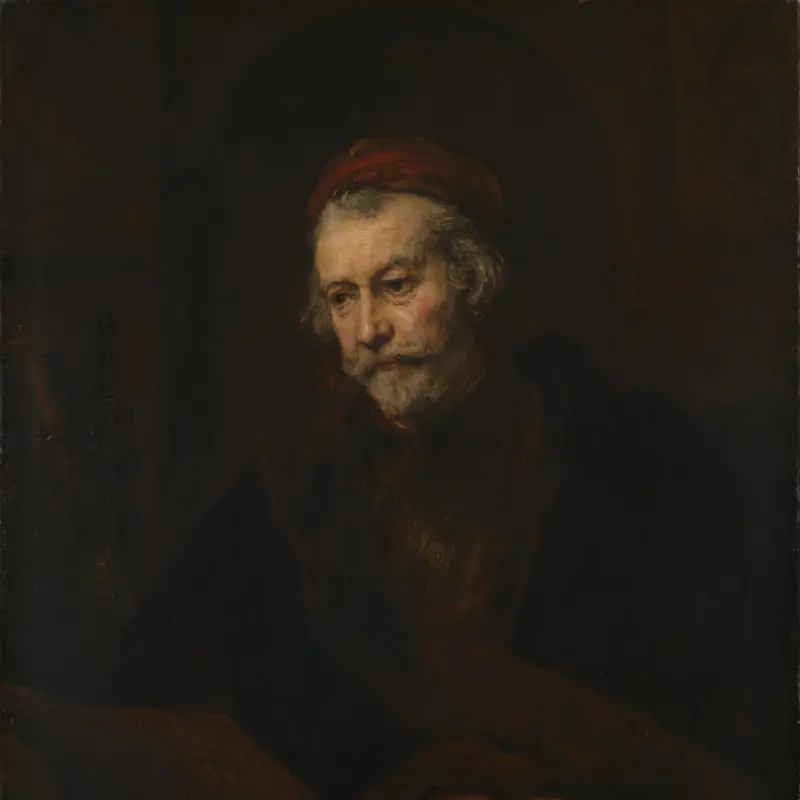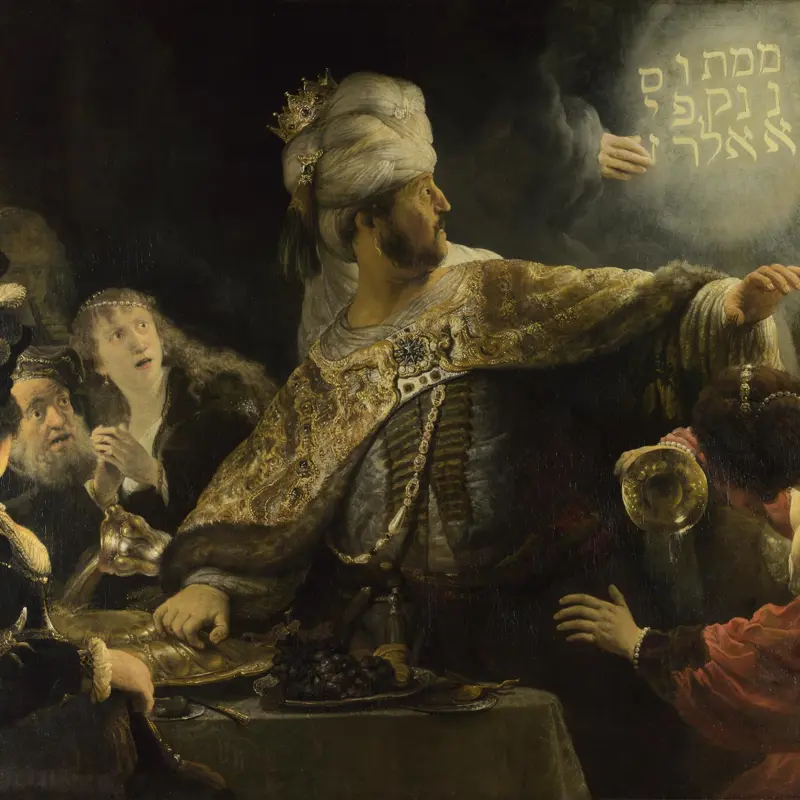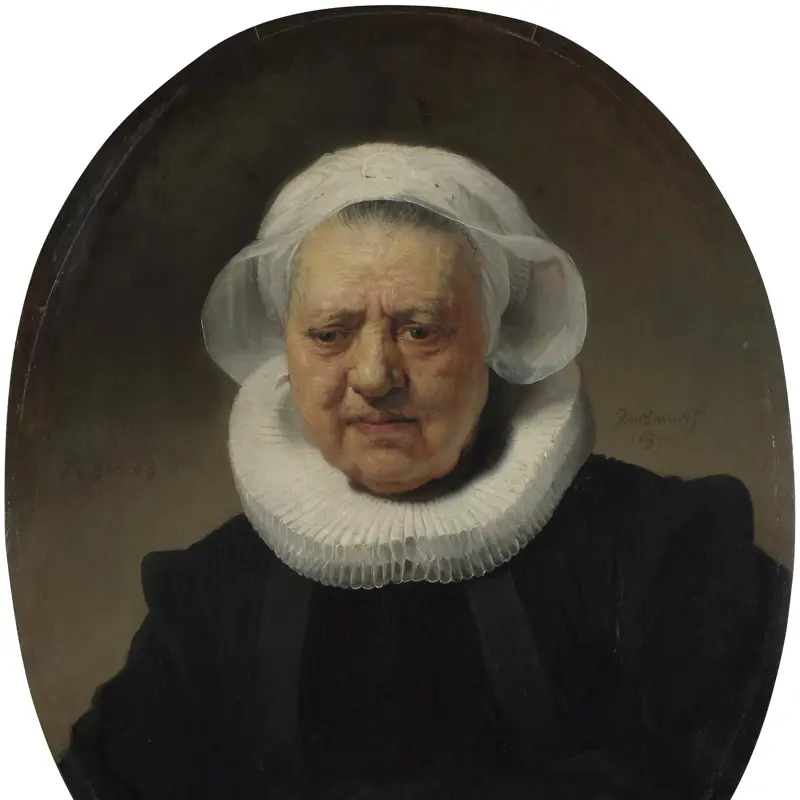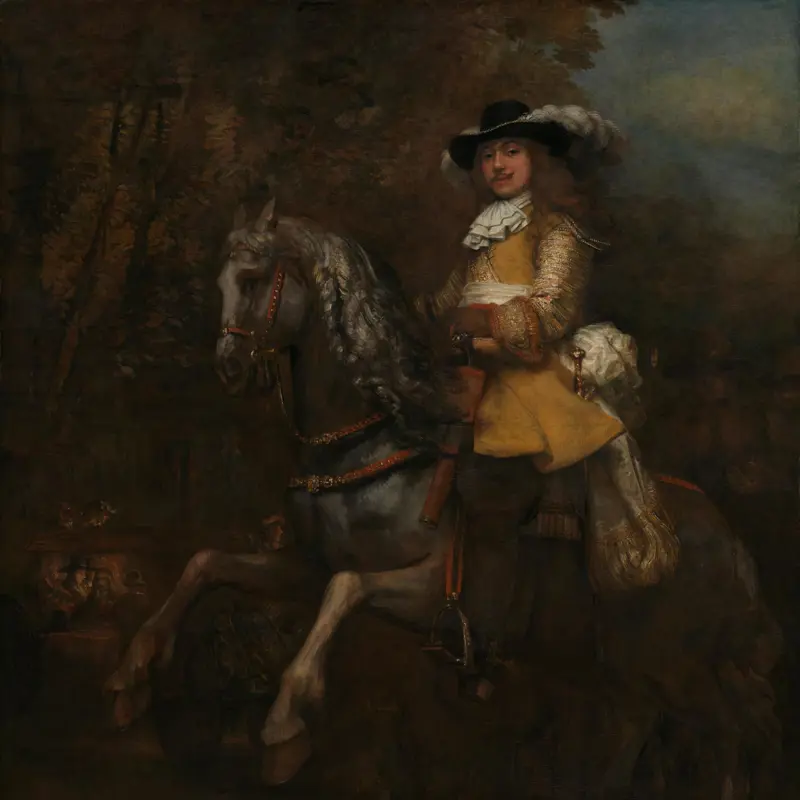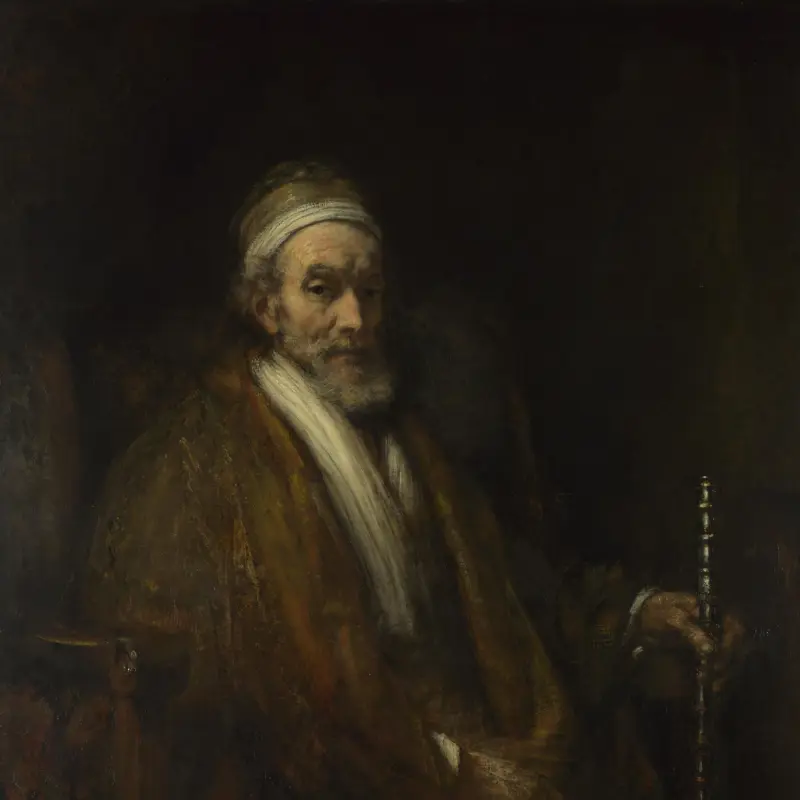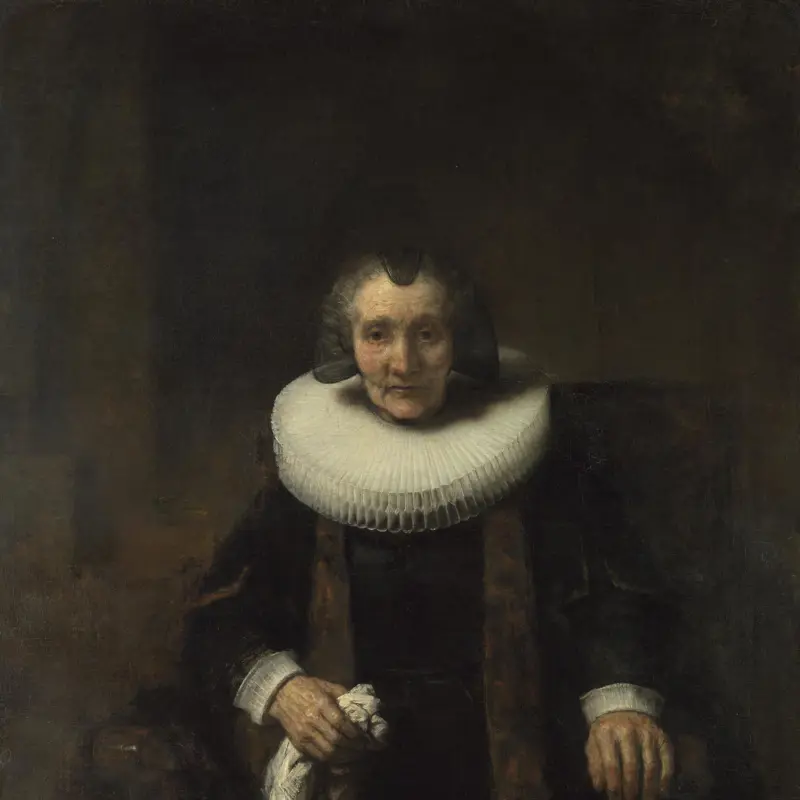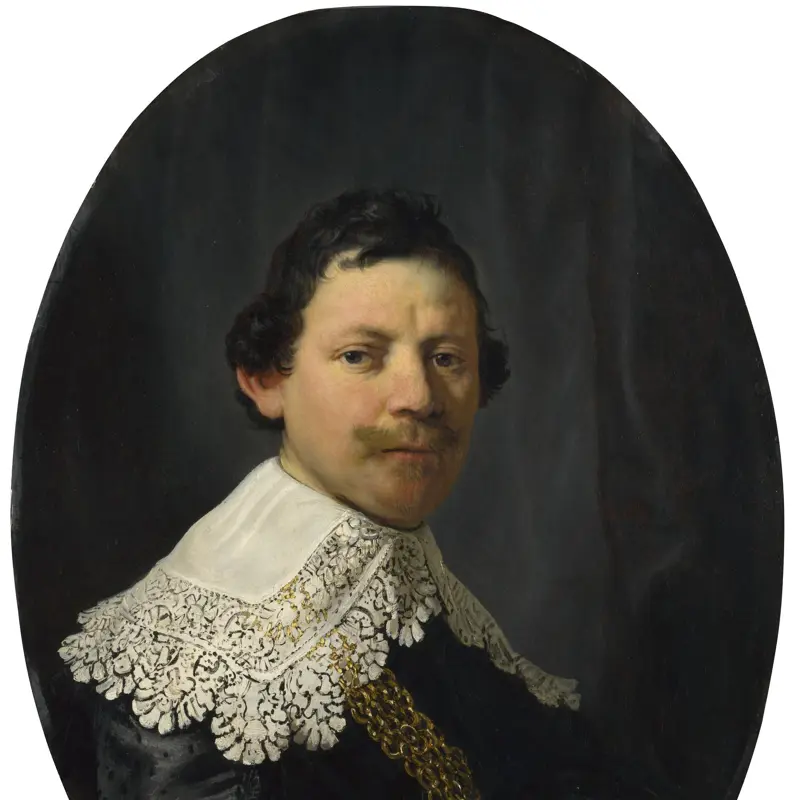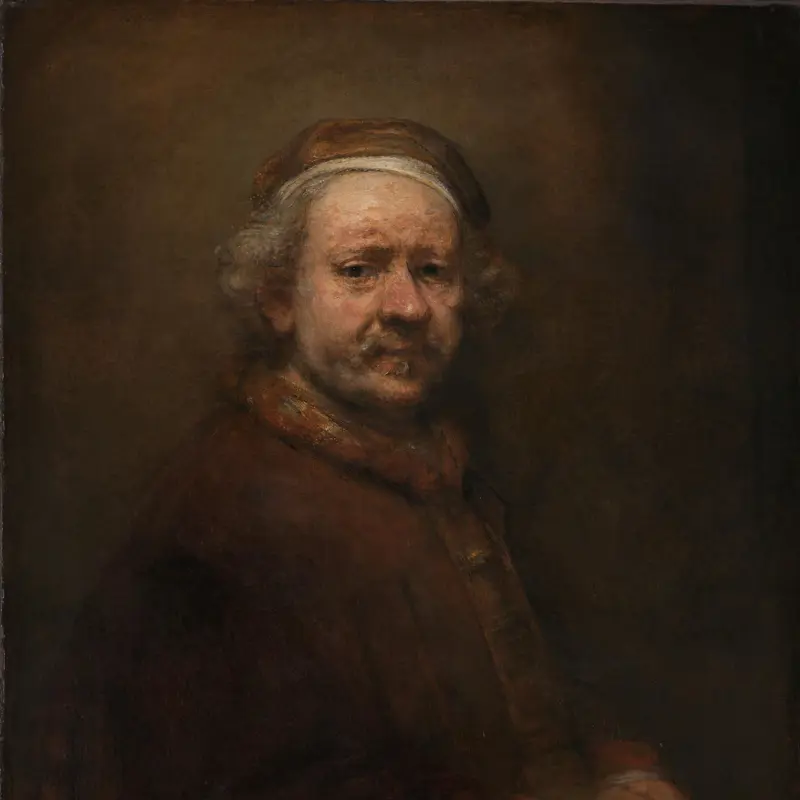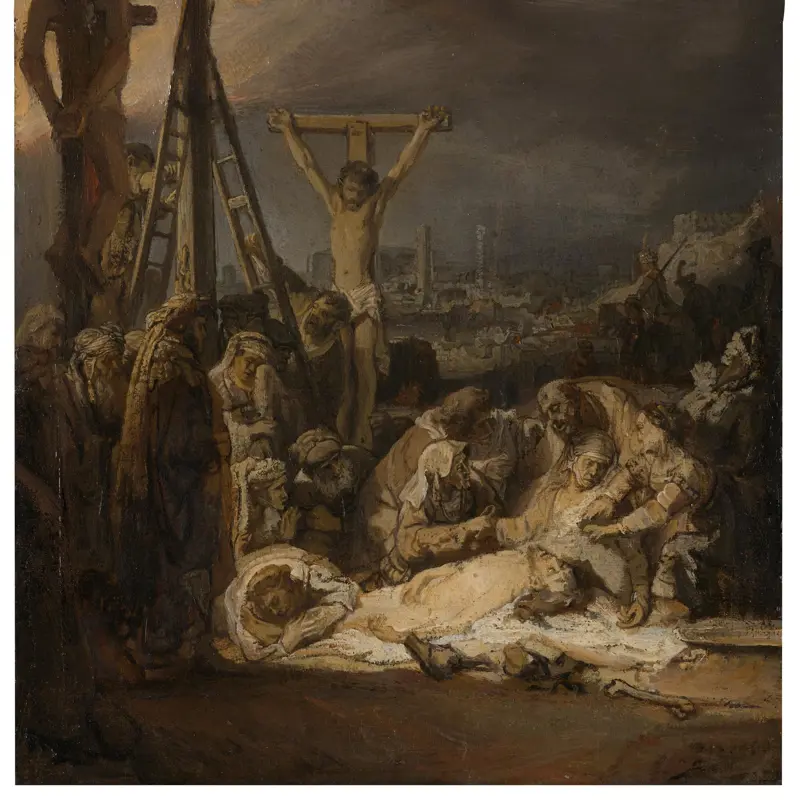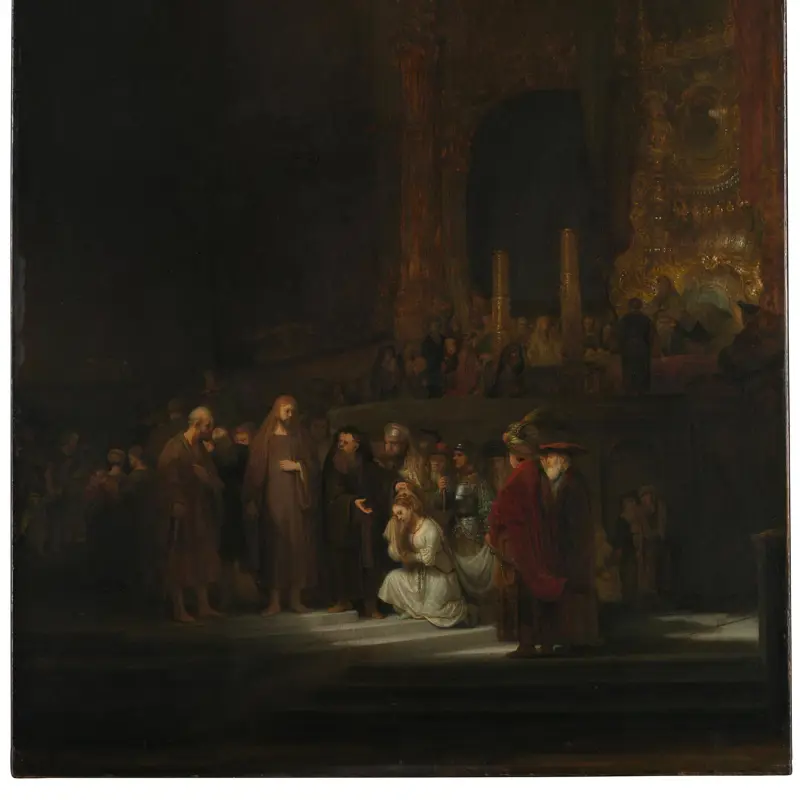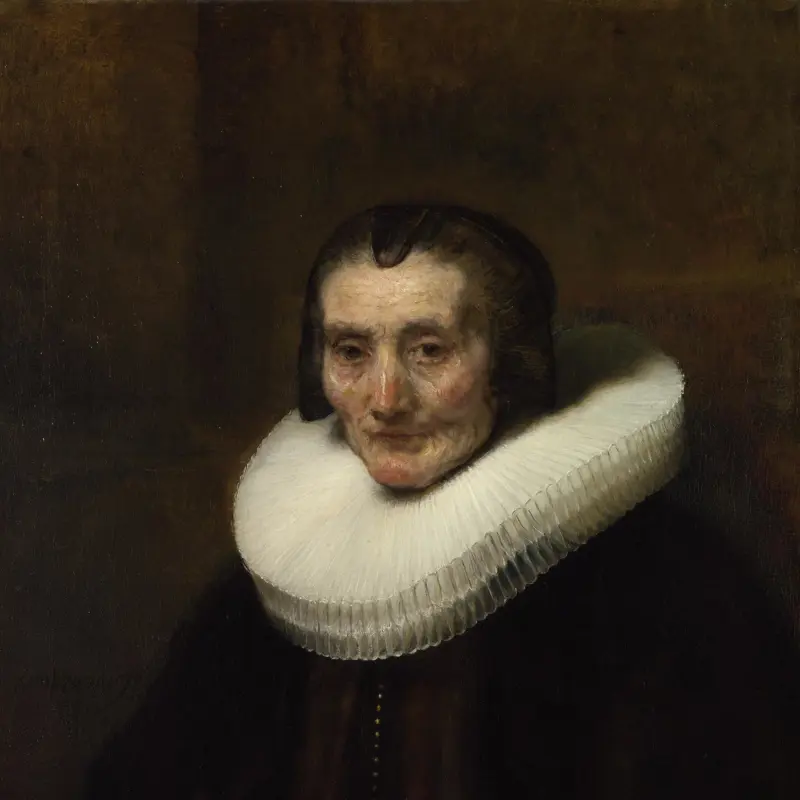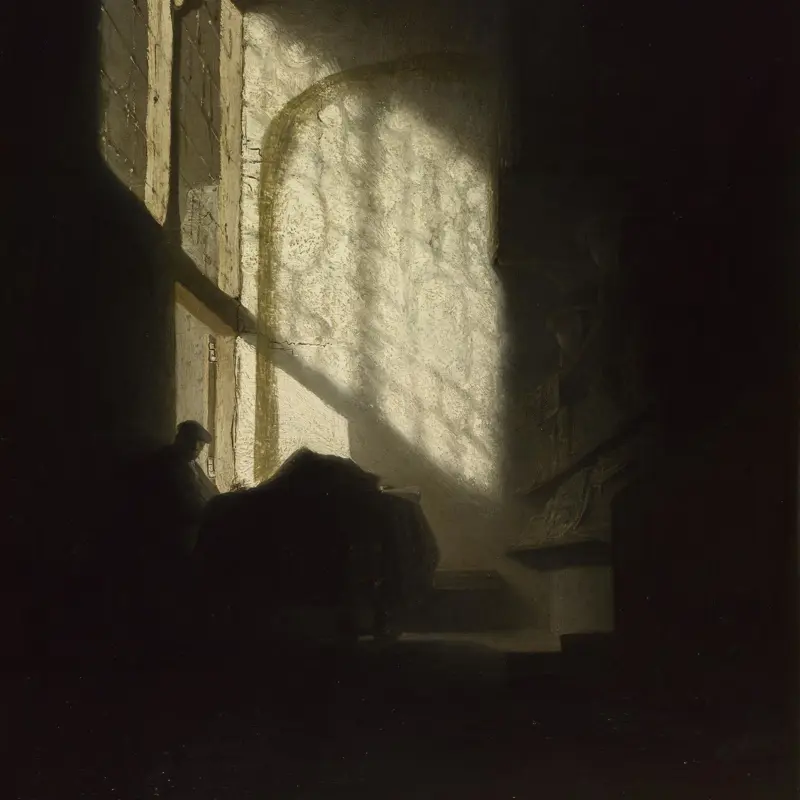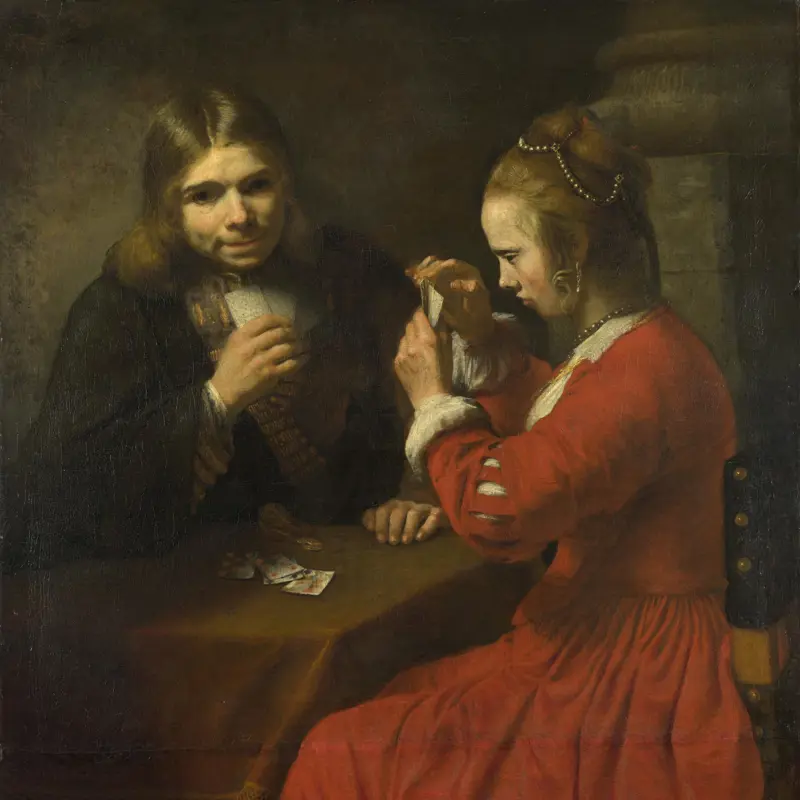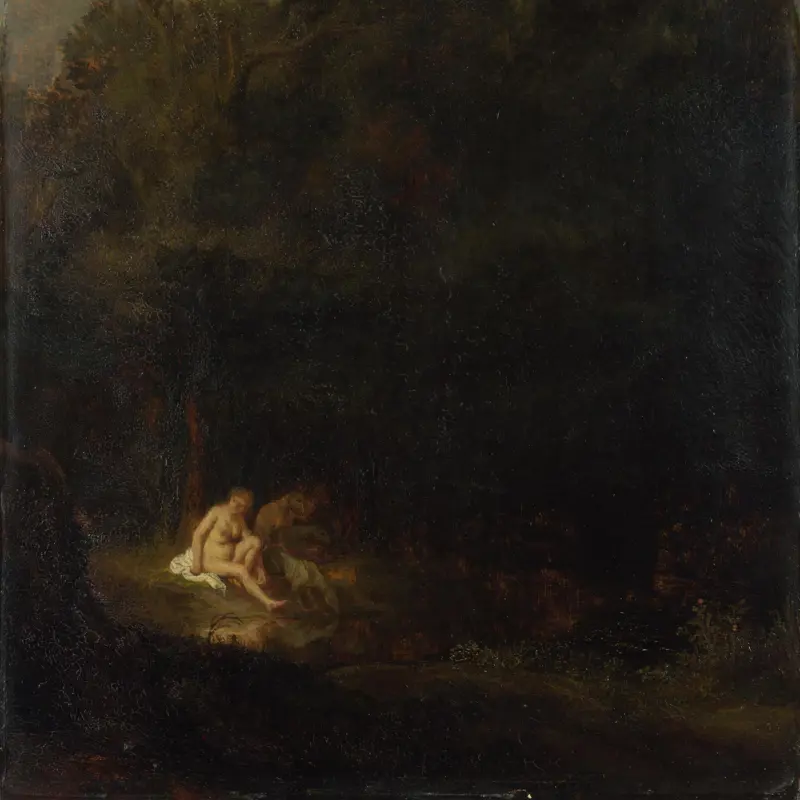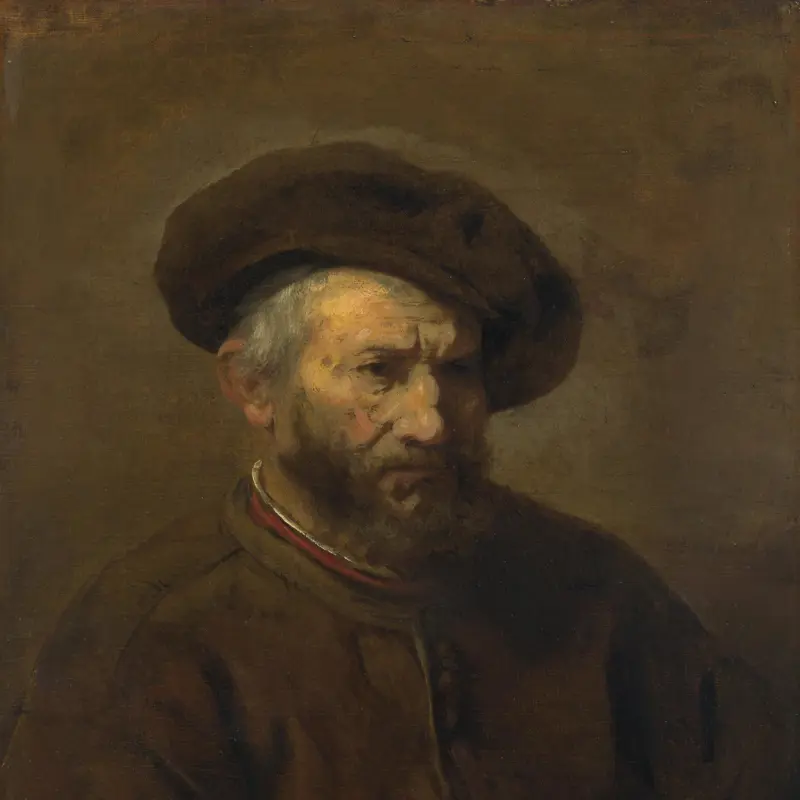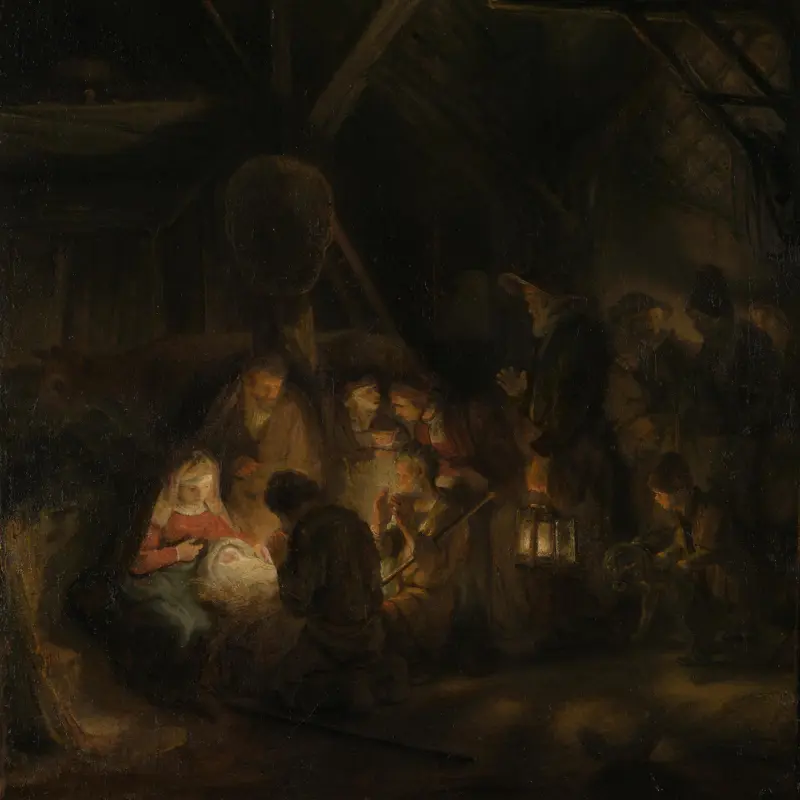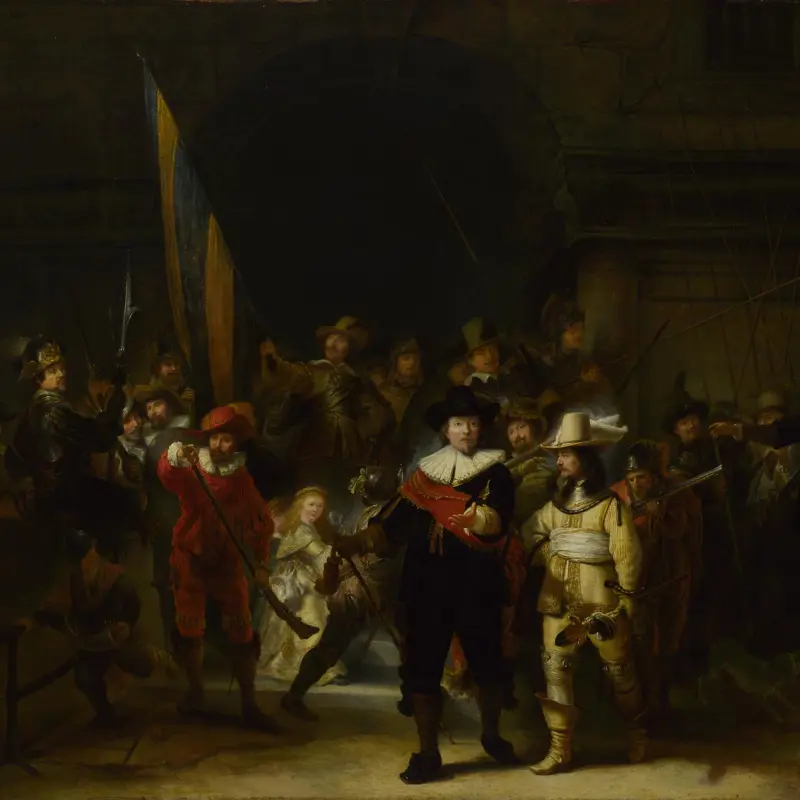Follower of Rembrandt, 'A Seated Man with a Stick', perhaps 1675-1725
About the work
Overview
This image of a man lit dramatically from one side as he grasps his walking stick and stares rather aloofly at the viewer is probably not a portrait. Rather it is a study of a character type, dressed in an exotic costume intended to evoke an earlier era.
Portraying figures in imaginary historical costume was common at the time. Rembrandt painted several and the subject, the lighting and the use of colour in this painting is reminiscent of his work. But while his signature can be seen on the bottom left of the painting, most art historians now believe it to be false and that this is a work by one of his students or imitators. The numerous adjustments to the sitter’s position and the shape of his hat revealed in X-ray images suggest a less confident approach to the painting than might be expected from Rembrandt himself.
Key facts
Details
- Full title
- A Seated Man with a Stick
- Artist
- Follower of Rembrandt
- Artist dates
- 1606 - 1669
- Date made
- perhaps 1675-1725
- Medium and support
- oil on canvas
- Dimensions
- 137.5 × 104.8 cm
- Acquisition credit
- Presented by Sir George Beaumont, 1823/8
- Inventory number
- NG51
- Location
- Not on display
- Collection
- Main Collection
- Previous owners
Provenance
Additional information
Text extracted from the ‘Provenance’ section of the catalogue entry in Neil MacLaren, revised and expanded by Christopher Brown, ‘National Gallery Catalogues: The Dutch School: 1600–1900’, London 1991; for further information, see the full catalogue entry.
Exhibition history
-
2008Picasso et les MaîtresGaleries Nationales du Grand Palais8 October 2008 - 2 February 2009
-
2016Painters' Paintings: From Freud to Van DyckThe National Gallery (London)23 June 2016 - 4 September 2016
Bibliography
-
1815Catalogue of Pictures by Rubens, Rembrandt, Vandyke, and Other Artists of the Flemish and Dutch Schools: With Which the Proprietors Have Favoured the British Institution for the Gratification of the Public and for the Benefit of the Fine Arts in General, London 1815
-
1829
J. Smith, A Catalogue Raisonné of the Works of the Most Eminent Dutch, Flemish, and French Painters: In Which is Included a Short Biographical Notice of the Artists, with a Copious Description of Their Principal Pictures […], 9 vols, London 1829-1842
-
1877C. Vosmaer, Rembrandt: Sa vie et ses oeuvres, La Haye 1877
-
1897W. von Bode and C. Hofstede de Groot, The Complete Work of Rembrandt, 8 vols, Paris 1897
-
1907C. Hofstede de Groot, Catalogue Raisonné of the Works of the Most Eminent Dutch Painters of the Seventeenth Century, 10 vols, London 1907
-
1907C. Hofstede de Groot, Catalogue Raisonné of the Works of the Most Eminent Dutch Painters of the Seventeenth Century, 10 vols, London 1907
-
1909A. Rosenberg and W.R. Valentiner, Rembrandt: Des Meisters Gemalde mit einer biographischen Einleitung, Stuttgart 1909
-
1947P. Hendy, An Exhibition of Cleaned Pictures of 1947: (1936-1947), London 1947
-
1960Maclaren, Neil, National Gallery Catalogues: The Dutch School, 2 vols, London 1960
-
1969E. Haverkamp-Begemann and J.R. Judson, Rembrandt after Three Hundred Years: An Exhibition of Rembrandt and his Followers (exh. cat. Art Institute of Chicago, 25 October - 7 December 1969; Minneapolis Institute of Arts, 22 December 1969 - 1 February 1970; Detroit Institute of Arts, 24 February - 5 April 1970), Chicago 1969
-
1988D. Davies and L. Trenchs, Noble and Patriotic: The Beaumont Gift 1828, (exh. cat. The National Gallery, 3 February - 3 May 1988), London 1988
-
1991Maclaren, Neil, revised by Christopher Brown, National Gallery Catalogues: The Dutch School, 1600-1900, 2nd edn (revised and expanded), 2 vols, London 1991
-
2001
C. Baker and T. Henry, The National Gallery: Complete Illustrated Catalogue, London 2001
-
2005M. Levey, Sir Thomas Lawrence, New Haven 2005
-
2006D. Bomford et al., Rembrandt, London 2006
-
2006G.J.M. Weber and M. Eissenhauer, Rembrandt-Bilder: Die historische Sammlung der Kasseler Gemäldegalerie, (exh. cat. Gemäldegalerie Alte Meister, Schloss Wilhelmshöhe, 20 May - 20 August 2006), Kassel 2006
About this record
If you know more about this work or have spotted an error, please contact us. Please note that exhibition histories are listed from 2009 onwards. Bibliographies may not be complete; more comprehensive information is available in the National Gallery Library.

